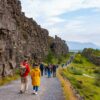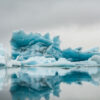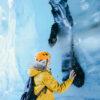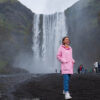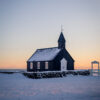4-Day Small Group Tour – Golden Circle, South Coast, Glacier Lagoon & Snaefellsnes





This small-group adventure has the best of Iceland a tour has to show, offering the best 4 day Iceland itinerary, taking you through the iconic Golden Circle and the breathtaking South Coast and the glacier lagoon. After returning to Reykjavik, your journey concludes with an unforgettable adventure to the spectacular Snæfellsnes Peninsula on the 4th day.
The natural attractions covered in this 4-day small-group guided tour are Iceland’s most iconic, showcasing diversity ranging from majestic glaciers and volcanic landscapes to stunning waterfalls, black sand beaches, and geothermal wonders. This small-group road trip follows part of the Ring Road, with breathtaking landscapes unfolding before your eyes.
Your journey begins with the iconic Golden Circle, where you’ll explore Thingvellir National Park, a UNESCO World Heritage site showcasing Iceland’s unique cultural and geographical heritage. Next, visit the Geysir geothermal fields, where Strokkur erupts every 5–10 minutes, sending water more than 20 meters into the air amidst the distinct sulfuric aroma of the area. The route continues to Gullfoss, a majestic two-tiered waterfall plunging 32 meters into a rugged canyon, often adorned with mist and rainbows on sunny days.
The day concludes with a visit to the stunning Reynisfjara black sand beach on the South Coast, leaving you captivated by its dramatic landscapes.
On Day 2, we delve into Iceland’s icy wonders, exploring the floating icebergs of Jokulsarlon, the shimmering shores of Fellsfjara- the Diamond Beach, and an awe-inspiring natural ice cave. Depending on the season, you’ll either visit the vast Vatnajökull Glacier in winter or the Katla Ice Cave on Mýrdalsjökull Glacier in summer.
Day 3 brings two of Iceland’s most famous waterfalls—the towering Skógafoss and the enchanting Seljalandsfoss, where you can walk behind the cascading water for a unique perspective. Along the way, we stop at the charming village of Vík í Mýrdal, with its red-roofed church perched on a hill and surrounded by mountains and glaciers. The day exploring South Iceland concludes in Reykjavik, where you’ll have time to explore the capital city.
On Day 4, we journey to the captivating Snæfellsnes Peninsula, often called “Iceland in Miniature” for its incredible variety of landscapes.
Highlights include the iconic Kirkjufell mountain with its postcard-perfect waterfall, the black pebble beach of Djúpalónssandur, and the mystical Snæfellsjökull Glacier, famously featured in Jules Verne’s Journey to the Center of the Earth.
This final day offers the perfect conclusion to an unforgettable adventure, showcasing the full spectrum of Iceland’s diverse and raw nature.
Reserve your spot today and get ready for an unforgettable 4-day Iceland adventure!



Tour highlights & itinerary
For our 4-day Golden Circle, South Iceland, glacier lagoon, and Snaefelslsens tour, we’ve chosen a strategically located, comfortable hotel as your base, and on the 3rd night, you will stay in a hotel located in central Reykjavik.
The hotel offers a variety of room options, all featuring private ensuite bathrooms and complimentary Wi-Fi. Amenities such as hairdryers and kettles are often provided, ensuring a cozy and hassle-free stay surrounded by Iceland’s awe-inspiring landscapes.
Start each day with a hearty continental buffet breakfast, featuring fresh, locally sourced ingredients—a perfect introduction to Nordic flavors as you prepare for the day’s adventures.
During the winter months, many hotels include a Northern Lights wake-up service, giving you the chance to witness this breathtaking phenomenon. If not, simply ask at the front desk to ensure you don’t miss this unforgettable Icelandic experience.




- Expert English speaking driver-guide and minibus
- Pick up and drop off from various location in Reykjavik
- Wifi on board
- Optional Ice cave tour - Katla ice cave in summer / Crystal ice cave in winter, and ride on our Super jeep to the ice cave
- Accommodation with breakfast for 3 nights
- Food & drinks
- Warm, water- and windproof outdoor clothing
- Good sturdy hiking boots
- Gloves and hat
- Cancellation Policy for Multi-Day Tours & Packages:
Multi-Day Tours are all scheduled group tours that include accommodation and packages are day tours sold together with accommodation.
All cancellations from customers should be notified via email to info@bustravel.is.- ‣ 100% refund of the tour price, if canceled 7 days or more prior to the starting time of the tour.
- ‣ 50% refund of the tour price, if canceled 7 days or less prior to the starting time of the tour.
- ‣ No refund is given if canceled 48 hours or less prior to the starting time of the tour.
- Hotels & single supplement fee: Customers traveling alone If you don´t pay the Single room fee, you might be paired with another solo traveler of the same gender in a twin room.
- Northern Lights: We will do our best to see the aurora during your time with us, but nature does not always play along. Aurora season is September to early April.
- Ice caves are dynamic natural wonders. The actual view of the ice caves during your visit might differ from the photographs, as they continuously change and evolve. Their appearance can vary due to factors like the season, time of day, lighting, and more.
Travelers reviews
Write a review
Share your experience with others.
Itinerary
Itinerary
 Reykjavik
ReykjavikThe tour kicks off at 8 a.m. sharp from Reykjavík with a pick-up process. Once everyone has settled into the minibus, we’ll embark on an exciting journey along Iceland’s famous Golden Circle Route.

1 Day 1 - Golden Circle of IcelandThe Golden Circle, Iceland’s most popular travel route, is a region filled with diverse landscapes and fascinating geological features.

2 Thingvellir National ParkOur first stop is Thingvellir National Park, a UNESCO World Heritage Site, one of Iceland’s most important cultural and geological landmarks. It’s the birthplace of the world’s first parliament, the Althing, established in 930 AD, making it a key site in Icelandic history. Geologically, the park is situated in a rift valley where the Eurasian and North American tectonic plates meet, creating a unique landscape of dramatic cliffs, fissures, and valleys as the plates slowly pull apart.
Visitors can walk between the continents through the Almannagjá fissure, one of the park’s most striking features, and explore its crystal-clear water-filled cracks, such as Silfra, which is famous for snorkeling and diving. The park also includes Thingvallavatn, Iceland’s largest natural lake, and several waterfalls, offering opportunities to experience both history and nature in one stunning location.

3 Geysir Geothermal AreaThe Geysir geothermal area is one of Iceland’s most famous natural attractions, located in the Haukadalur Valley. This geothermal field is home to bubbling natural hot springs, steaming vents, and active geysers, showcasing the intense geothermal activity beneath Iceland’s surface. The area’s most iconic feature is Strokkur, a highly active geyser that erupts every 5–10 minutes, shooting water up to 20–30 meters into the air, providing visitors with a spectacular display of nature’s power.
The site is named after the now mostly dormant Great Geysir, the first geyser known to Europeans and the origin of the word “geyser.” Walking through the area, visitors can see pools of boiling water, colorful mineral deposits, and feel the warmth of the earth beneath their feet, all while surrounded by the distinctive smell of sulfur.
The Geysir Geothermal Area offers a fascinating glimpse into Iceland’s volcanic energy and its dramatic impact on the landscape.

4 Gullfoss WaterfallGullfoss, meaning “Golden Falls,” is one of Iceland’s most famous waterfalls and a highlight of the Golden Circle route. Located on the Hvítá River, Gullfoss features a two-tiered cascade that plunges a total of 32 meters into a rugged canyon, creating a dramatic and powerful spectacle.
The waterfall is fed by meltwater from Langjökull, Iceland’s second-largest glacier, and its flow can vary greatly depending on the season. On sunny days, the mist rising from the falls often creates beautiful rainbows, adding to its iconic appeal. Visitors can view Gullfoss from multiple vantage points, with paths leading close to the edge of the canyon for a breathtaking experience.
Beyond its natural beauty, Gullfoss also holds historical significance as a symbol of Iceland’s dedication to preserving its natural landscapes. In the early 20th century, efforts to harness its power for energy were met with resistance, leading to its protection as a national treasure.

5 Reynisfjara Black Sand BeachReynisfjara Black Sand Beach, located on Iceland’s South Coast near the village of Vík, is one of the country’s most iconic and dramatic natural attractions. Known for its striking black volcanic sand, the beach is framed by towering basalt columns, sea stacks, and roaring Atlantic waves.
The most notable features are the Reynisdrangar sea stacks, towering rock formations that rise from the ocean just off the coast. According to local folklore, these formations are trolls who were turned to stone by the sunlight. The beach is also home to the Hálsanefshellir cave, a unique natural formation lined with geometric basalt columns, resembling a giant organ.
While the beach is breathtakingly beautiful, it is also known for its powerful waves and unpredictable currents, so visitors are urged to keep a safe distance from the water. Reynisfjara offers a one-of-a-kind experience, combining Iceland’s stark volcanic landscapes with the raw energy of the North Atlantic, making it a must-visit destination for anyone exploring the South Coast.

6 Northern Lights Discovery - September to March onlyWhen we arrive at the hotel for the night, your guide will share the latest updates on the chances of seeing the Northern Lights. If the skies are clear and the forecast looks promising when other conditions are good, we might head out to look for aurora borealis.
Of course, the Northern Lights are unpredictable, and if conditions aren’t favorable, we’ll simply relax and unwind at the hotel. Keep in mind that the best time for viewing the aurora is between September and March, when the nights are darkest and the chances are highest.

7 Day 2 - Jokulsarlon glacier lagoon & Ice cave tourOn day two, we dive into Iceland’s glacial wonders. Explore a stunning ice cave, marvel at icebergs in the glacier lagoon, and visit Diamond Beach, where sparkling ice contrasts beautifully with black sands.

8 Jokulsarlon Glacier LagoonJökulsárlón Glacier Lagoon, located at the edge of Vatnajökull Glacier, is one of Iceland’s most awe-inspiring natural landmarks. The lagoon is filled with icebergs that calve from the glacier, drifting peacefully in the water and creating a dazzling spectacle of shapes, sizes, and shades of blue. The ever-changing scenery reflects the dynamic nature of Iceland’s glacial landscapes.
Seals are often spotted swimming among the icebergs, adding a touch of wildlife to the tranquil setting.
Whether visiting during the midnight sun or under the northern lights, any time of year, Jökulsárlón is a must-see destination for its serene beauty and unique glacial charm.

9 Optional Ice Cave ExplorationPlease note: You can add this exciting Ice Cave tour when booking your trip or ask your guide to include it during the tour. We’ll do our best to accommodate you, subject to availability.
Exploring a natural ice cave is an unforgettable experience visiting Iceland, no matter the season. To reach the caves, we switch to a super jeep for the journey up onto the glacier.
You’ll be provided with all the essential safety gear, including crampons and a helmet, ensuring a secure and enjoyable adventure, which may include a brief glacier hike.
Inside, you’ll witness the breathtaking beauty of these caves, where sunlight refracts through the pristine, clear ice, casting a stunning blue glow. The ever-changing ice forms intricate patterns and shapes, making each visit unique.
Please note that ice caves evolve over time, so their appearance may differ from the images shown.
A friendly reminder:
- October to March: We explore the Crystal Ice Caves of Vatnajökull Glacier.
- April to September: We visit the Katla Ice Cave on Mýrdalsjökull Glacier in the west.

10 Fellsfjara - Diamond BeachDiamond Beach, locally known as Fellsfjara, is a striking black sand beach located near Jökulsárlón Glacier Lagoon. The beach earns its name from the glittering icebergs that wash ashore after calving from the nearby glacier. These icebergs, in varying sizes and shapes, sparkle like diamonds against the dark volcanic sands, creating a truly magical scene.
You can stroll along the beach, marveling at the contrast between the shimmering ice and the jet-black sand, while listening to the sounds of waves crashing against the shore. Fellsfjara offers a one-of-a-kind experience, blending natural beauty and the raw power of Iceland’s glaciers.

11 Northern Lights Discovery - September to March onlyIf we didn’t head out on night one, we’ll take the opportunity to do so on night two instead. As the Northern Lights are a natural phenomenon, we rely on clear skies and solar activity for the best chances of seeing them.
Keep in mind that the peak season for Northern Lights viewing is from September to March.

12 Day 3 - South Iceland and return to ReykjavikOn day 3, we are going to explore the beautiful waterfalls along the south coast of Iceland before we head back to Reykjavik.

13 Vík í MýrdalVík í Mýrdal, often simply called Vík, is a picturesque village nestled between dramatic cliffs and the vast Atlantic Ocean on Iceland’s South Coast. Known for its iconic red-roofed church perched on a hill, the village offers stunning views of the surrounding black sand beaches, rugged mountains, and glaciers.
As the southernmost village in Iceland, Vík serves as a perfect stopping point for exploring nearby attractions like Vikursfjara black sand beach and the Reynisdrangar sea stacks. Despite its small size, Vík’s natural beauty and peaceful atmosphere make it a memorable destination for travelers.

14 Skogafoss WaterfallSkógafoss, one of Iceland’s most famous waterfalls, is a breathtaking sight on the South Coast. With a drop of 60 meters (197 feet) and a width of 25 meters (82 feet), it creates a powerful cascade that can be seen and heard from afar. On sunny days, the mist from the falls often produces vibrant rainbows, adding to its allure.
You can admire Skógafoss from the base, feeling the spray of the water, or climb the stairs to a viewing platform above for panoramic views of the falls and surrounding landscapes. Rich in legend and natural beauty, Skógafoss is a must-see in Iceland.

15 Seljalandsfoss WaterfallSeljalandsfoss is one of Iceland’s most iconic waterfalls, known for its unique feature that allows visitors to walk behind the cascading water. Plunging 60 meters (197 feet) from a cliff, the waterfall offers stunning views from all angles, with the surrounding lush greenery adding to its charm.
The path behind the falls provides a rare opportunity to experience the power of nature up close and capture incredible photos from within the waterfall itself. Located just off the Ring Road on Iceland’s South Coast, Seljalandsfoss is an unforgettable stop that perfectly showcases the beauty and uniqueness of Icelandic landscapes.

16 ReykjavkAfter our unforgettable journey, we’ll begin our return to Reykjavik, aiming to arrive by early evening. However, this timing may vary based on weather conditions and road conditions along the way.

17 Day 4 - Snaefellsnes PeninsulaToday’s adventure takes us to the stunning Snæfellsnes Peninsula, nicknamed “Iceland in Miniature” for its diverse landscapes. Highlights include the iconic Kirkjufell mountain, Djúpalónssandur’s black pebble beach, and the glacier-capped Snæfellsjökull, showcasing the best of Iceland’s natural beauty.

18 Central Reykjavik - pick upYour tour starts with our quick and convenient pickup service at your hotel. We ensure a smooth and timely pickup so we can maximize our time exploring the diverse landscapes and wonders of the Snæfellsnes Peninsula.

19 Berserkjahraun LavafieldsOur first stop is Berserkjahraun, a moss-covered lava field formed by an eruption from the nearby Bjarnarhafnafjall mountain over 4,000 years ago. The vast scale of the lava fields highlights the immense power of Icelandic volcanoes in shaping the landscape. The name “Berserkjahraun,” meaning “lava field of the frenzied warriors,” reflects the untamed fury unleashed during the mountain’s explosive eruption, leaving behind this striking natural wonder.

20 Mt. KirkjufellMt. Kirkjufell, often called “Church Mountain” due to its distinctive shape, is one of Iceland’s most photographed landmarks. Located near the town of Grundarfjörður on the Snæfellsnes Peninsula, this standalone peak rises dramatically from the surrounding landscape, creating a striking backdrop for photographers and nature enthusiasts alike.
The mountain is perfectly complemented by the nearby Kirkjufellsfoss waterfall, which adds to the scenic beauty of the area. Its symmetrical form and stunning surroundings make it a must-visit destination, offering an unforgettable view that has earned it a reputation as one of Iceland’s most picturesque sights.

21 Kirkjufellsfoss WaterfallsKirkjufellsfoss is a picturesque series of small waterfalls located near Mt. Kirkjufell on the Snæfellsnes Peninsula. The falls, fed by a glacial stream, cascade gently over rocky terrain, creating a tranquil and photogenic scene.
The combination of Kirkjufellsfoss and the iconic Mt. Kirkjufell in the background makes this spot one of Iceland’s most photographed locations. Whether you visit during the green hues of summer or the snow-covered serenity of winter, the view is nothing short of breathtaking. Kirkjufellsfoss is a must-see for those seeking to capture the natural beauty of Iceland.

22 Snæfellsjökull National ParkSnæfellsjökull National Park, located on the western tip of the Snæfellsnes Peninsula, is a haven of diverse landscapes and geological wonders. At its heart lies the Snæfellsjökull Glacier, a dormant volcano topped with ice, famously featured in Jules Verne’s Journey to the Center of the Earth. The glacier offers stunning views and is steeped in folklore, often considered a mystical and spiritual site by locals.
The park is home to rugged lava fields, dramatic cliffs, black sand beaches, and unique volcanic formations, making it a paradise for nature lovers. Hiking trails wind through the park, offering opportunities to explore its diverse terrain and spot seabirds and Arctic foxes. Whether drawn by its natural beauty, geological history, or cultural significance, Snæfellsjökull National Park is a must-visit destination for anyone exploring Iceland.

23 Djúpalónssandur BeachDjúpalónssandur Beach is a striking black sand beach on the Snæfellsnes Peninsula, known for its dramatic beauty and rich history. The beach is scattered with smooth black pebbles, known as Djúpalónsperlur, and offers stunning views of the Atlantic Ocean framed by rugged cliffs.
The site is steeped in Icelandic heritage, with remnants of a shipwreck visible on the beach as a reminder of the area’s seafaring past. Visitors can also test their strength with the four ancient lifting stones once used to measure the fitness of fishermen.
Djúpalónssandur Beach combines natural beauty, cultural history, and an aura of mystery, making it an unmissable stop on the Snæfellsnes Peninsula.

24 Lóndrangar Basalt CliffsThe Lóndrangar Basalt Cliffs are a pair of towering rock pinnacles rising dramatically from the coastline of the Snæfellsnes Peninsula. These natural formations are the remnants of an ancient volcanic crater, sculpted by centuries of wind and sea erosion.
Standing at 75 and 61 meters tall, the cliffs are a haven for seabirds, including puffins and fulmars, making it a paradise for birdwatchers. Rich in local folklore, the Lóndrangar are said to be the homes of elves and spirits, adding a mystical charm to their striking presence.
With panoramic ocean views and the power of nature on full display, the Lóndrangar Basalt Cliffs are a must-see destination for anyone exploring Iceland’s rugged coastline.

25 Arnarstapi finishing village and coastArnarstapi, a small fishing village on the southern coast of the Snæfellsnes Peninsula, is renowned for its dramatic coastal landscapes and tranquil atmosphere. The area is dotted with fascinating basalt rock formations, sea cliffs, and natural arches shaped by the relentless power of the Atlantic Ocean.
The village is steeped in history and folklore, with a statue of Bárður Snæfellsás, a legendary guardian of the peninsula, standing proudly near the cliffs. A walking trail connects Arnarstapi to nearby Hellnar, offering breathtaking views of the rugged coastline, teeming birdlife, and the distant Snæfellsjökull Glacier.
Arnarstapi is a perfect blend of natural beauty, history, and charm, making it an essential stop on the Snæfellsnes Peninsula.

26 Búðir Black ChurchThe Búðir Black Church, or Búðakirkja, is a striking landmark on the Snæfellsnes Peninsula, known for its stark black exterior set against the dramatic Icelandic landscape. Originally built in the 19th century, the church is steeped in history and remains a symbol of Iceland’s cultural heritage.
Surrounded by lava fields and sweeping views of mountains, the church offers a serene and picturesque setting. Its simplicity and solitude make it a popular destination for photographers and travelers seeking a moment of quiet reflection in nature.

27 Ytri Tunga Beach SealsYtri Tunga Beach, located on the southern side of the Snæfellsnes Peninsula, is famous for its resident seal colonies and golden sands, a rare sight among Iceland’s predominantly black sand beaches. The beach is one of the best places in Iceland to observe seals in their natural habitat, particularly during the summer months when they often bask on the rocks and shoreline.
The calm waters and scenic surroundings make Ytri Tunga an inviting stop for nature lovers. You can enjoy a peaceful stroll along the beach while watching seals at play and taking in the beauty of the coastal landscape.
 Central Reykjavik
Central ReykjavikAs our 4-day adventure comes to an end, we begin the journey back to Reykjavik, leaving you with cherished memories of Iceland’s iconic sights and lesser-explored treasures. With four days of iconic sights and unforgettable experiences, we hope your trip to Iceland allows you to fully immerse yourself in its wonders and make the most of every moment.



































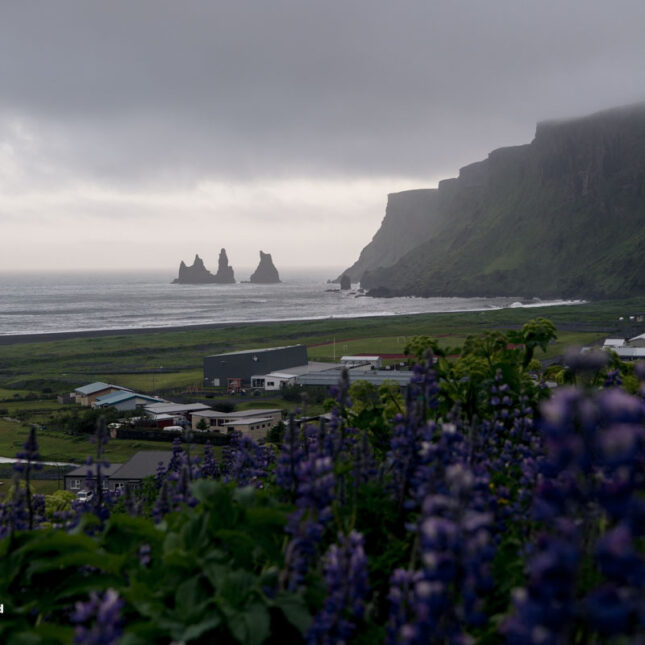































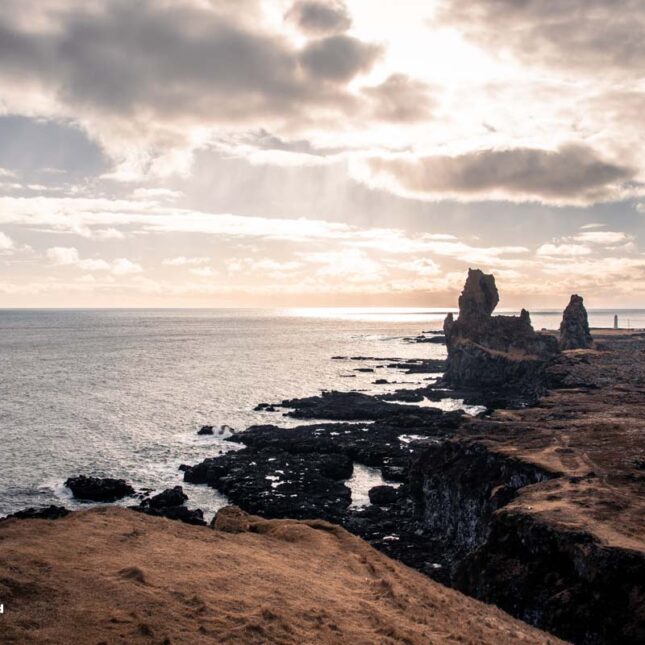








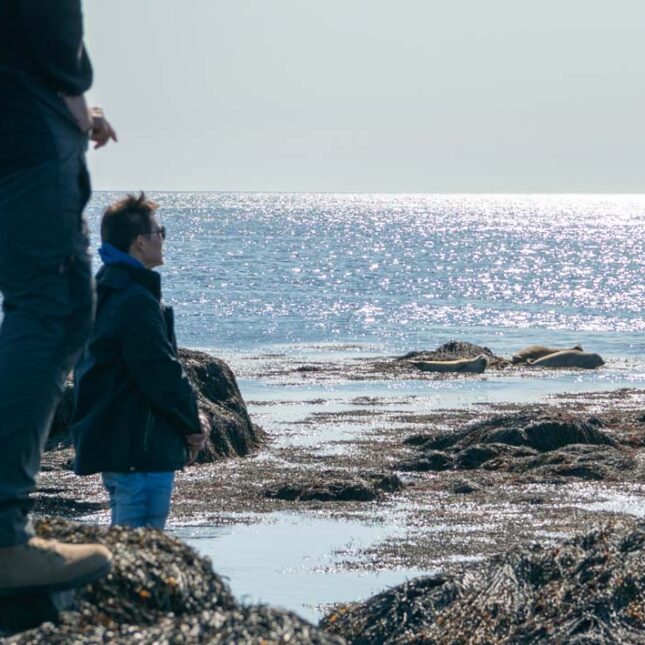




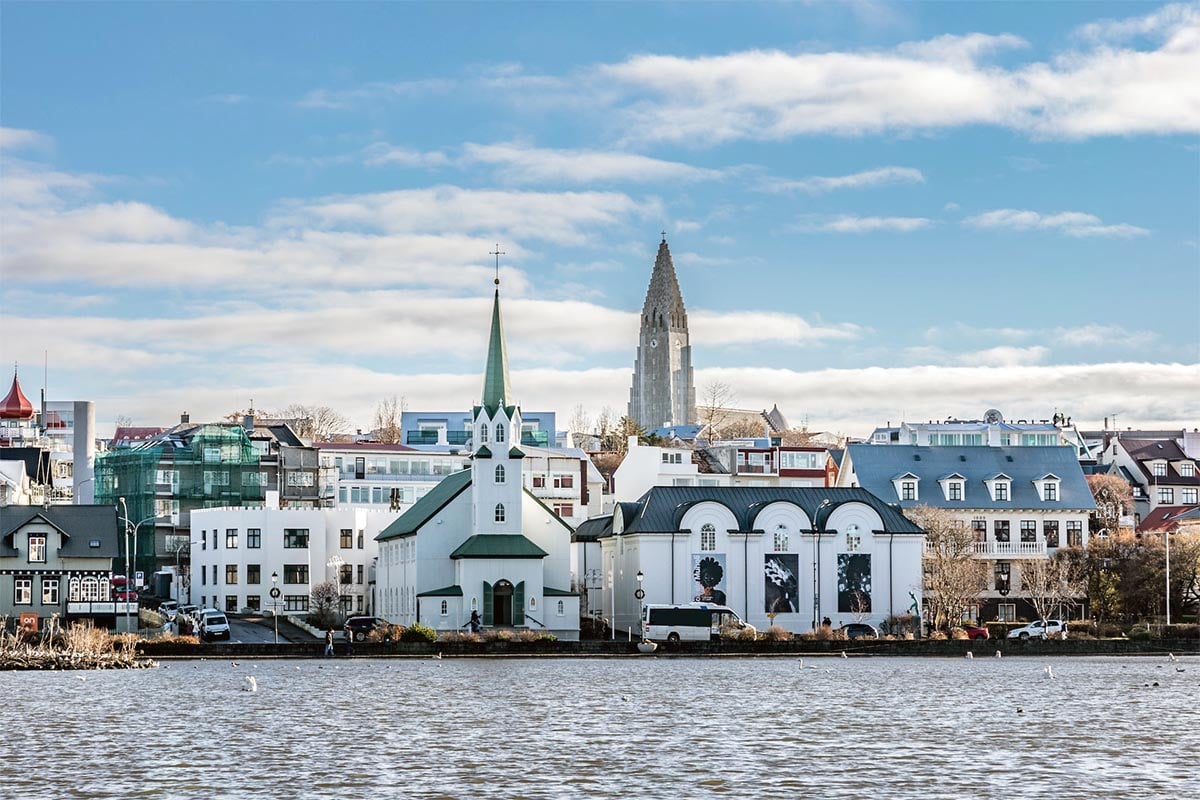
The tour kicks off at 8 a.m. sharp from Reykjavík with a pick-up process. Once everyone has settled into the minibus, we’ll embark on an exciting journey along Iceland’s famous Golden Circle Route.

The Golden Circle, Iceland’s most popular travel route, is a region filled with diverse landscapes and fascinating geological features.

Our first stop is Thingvellir National Park, a UNESCO World Heritage Site, one of Iceland’s most important cultural and geological landmarks. It’s the birthplace of the world’s first parliament, the Althing, established in 930 AD, making it a key site in Icelandic history. Geologically, the park is situated in a rift valley where the Eurasian and North American tectonic plates meet, creating a unique landscape of dramatic cliffs, fissures, and valleys as the plates slowly pull apart.
Visitors can walk between the continents through the Almannagjá fissure, one of the park’s most striking features, and explore its crystal-clear water-filled cracks, such as Silfra, which is famous for snorkeling and diving. The park also includes Thingvallavatn, Iceland’s largest natural lake, and several waterfalls, offering opportunities to experience both history and nature in one stunning location.

The Geysir geothermal area is one of Iceland’s most famous natural attractions, located in the Haukadalur Valley. This geothermal field is home to bubbling natural hot springs, steaming vents, and active geysers, showcasing the intense geothermal activity beneath Iceland’s surface. The area’s most iconic feature is Strokkur, a highly active geyser that erupts every 5–10 minutes, shooting water up to 20–30 meters into the air, providing visitors with a spectacular display of nature’s power.
The site is named after the now mostly dormant Great Geysir, the first geyser known to Europeans and the origin of the word “geyser.” Walking through the area, visitors can see pools of boiling water, colorful mineral deposits, and feel the warmth of the earth beneath their feet, all while surrounded by the distinctive smell of sulfur.
The Geysir Geothermal Area offers a fascinating glimpse into Iceland’s volcanic energy and its dramatic impact on the landscape.

Gullfoss, meaning “Golden Falls,” is one of Iceland’s most famous waterfalls and a highlight of the Golden Circle route. Located on the Hvítá River, Gullfoss features a two-tiered cascade that plunges a total of 32 meters into a rugged canyon, creating a dramatic and powerful spectacle.
The waterfall is fed by meltwater from Langjökull, Iceland’s second-largest glacier, and its flow can vary greatly depending on the season. On sunny days, the mist rising from the falls often creates beautiful rainbows, adding to its iconic appeal. Visitors can view Gullfoss from multiple vantage points, with paths leading close to the edge of the canyon for a breathtaking experience.
Beyond its natural beauty, Gullfoss also holds historical significance as a symbol of Iceland’s dedication to preserving its natural landscapes. In the early 20th century, efforts to harness its power for energy were met with resistance, leading to its protection as a national treasure.

Reynisfjara Black Sand Beach, located on Iceland’s South Coast near the village of Vík, is one of the country’s most iconic and dramatic natural attractions. Known for its striking black volcanic sand, the beach is framed by towering basalt columns, sea stacks, and roaring Atlantic waves.
The most notable features are the Reynisdrangar sea stacks, towering rock formations that rise from the ocean just off the coast. According to local folklore, these formations are trolls who were turned to stone by the sunlight. The beach is also home to the Hálsanefshellir cave, a unique natural formation lined with geometric basalt columns, resembling a giant organ.
While the beach is breathtakingly beautiful, it is also known for its powerful waves and unpredictable currents, so visitors are urged to keep a safe distance from the water. Reynisfjara offers a one-of-a-kind experience, combining Iceland’s stark volcanic landscapes with the raw energy of the North Atlantic, making it a must-visit destination for anyone exploring the South Coast.

When we arrive at the hotel for the night, your guide will share the latest updates on the chances of seeing the Northern Lights. If the skies are clear and the forecast looks promising when other conditions are good, we might head out to look for aurora borealis.
Of course, the Northern Lights are unpredictable, and if conditions aren’t favorable, we’ll simply relax and unwind at the hotel. Keep in mind that the best time for viewing the aurora is between September and March, when the nights are darkest and the chances are highest.

On day two, we dive into Iceland’s glacial wonders. Explore a stunning ice cave, marvel at icebergs in the glacier lagoon, and visit Diamond Beach, where sparkling ice contrasts beautifully with black sands.

Jökulsárlón Glacier Lagoon, located at the edge of Vatnajökull Glacier, is one of Iceland’s most awe-inspiring natural landmarks. The lagoon is filled with icebergs that calve from the glacier, drifting peacefully in the water and creating a dazzling spectacle of shapes, sizes, and shades of blue. The ever-changing scenery reflects the dynamic nature of Iceland’s glacial landscapes.
Seals are often spotted swimming among the icebergs, adding a touch of wildlife to the tranquil setting.
Whether visiting during the midnight sun or under the northern lights, any time of year, Jökulsárlón is a must-see destination for its serene beauty and unique glacial charm.

Please note: You can add this exciting Ice Cave tour when booking your trip or ask your guide to include it during the tour. We’ll do our best to accommodate you, subject to availability.
Exploring a natural ice cave is an unforgettable experience visiting Iceland, no matter the season. To reach the caves, we switch to a super jeep for the journey up onto the glacier.
You’ll be provided with all the essential safety gear, including crampons and a helmet, ensuring a secure and enjoyable adventure, which may include a brief glacier hike.
Inside, you’ll witness the breathtaking beauty of these caves, where sunlight refracts through the pristine, clear ice, casting a stunning blue glow. The ever-changing ice forms intricate patterns and shapes, making each visit unique.
Please note that ice caves evolve over time, so their appearance may differ from the images shown.
A friendly reminder:
- October to March: We explore the Crystal Ice Caves of Vatnajökull Glacier.
- April to September: We visit the Katla Ice Cave on Mýrdalsjökull Glacier in the west.

Diamond Beach, locally known as Fellsfjara, is a striking black sand beach located near Jökulsárlón Glacier Lagoon. The beach earns its name from the glittering icebergs that wash ashore after calving from the nearby glacier. These icebergs, in varying sizes and shapes, sparkle like diamonds against the dark volcanic sands, creating a truly magical scene.
You can stroll along the beach, marveling at the contrast between the shimmering ice and the jet-black sand, while listening to the sounds of waves crashing against the shore. Fellsfjara offers a one-of-a-kind experience, blending natural beauty and the raw power of Iceland’s glaciers.

If we didn’t head out on night one, we’ll take the opportunity to do so on night two instead. As the Northern Lights are a natural phenomenon, we rely on clear skies and solar activity for the best chances of seeing them.
Keep in mind that the peak season for Northern Lights viewing is from September to March.

On day 3, we are going to explore the beautiful waterfalls along the south coast of Iceland before we head back to Reykjavik.

Vík í Mýrdal, often simply called Vík, is a picturesque village nestled between dramatic cliffs and the vast Atlantic Ocean on Iceland’s South Coast. Known for its iconic red-roofed church perched on a hill, the village offers stunning views of the surrounding black sand beaches, rugged mountains, and glaciers.
As the southernmost village in Iceland, Vík serves as a perfect stopping point for exploring nearby attractions like Vikursfjara black sand beach and the Reynisdrangar sea stacks. Despite its small size, Vík’s natural beauty and peaceful atmosphere make it a memorable destination for travelers.

Skógafoss, one of Iceland’s most famous waterfalls, is a breathtaking sight on the South Coast. With a drop of 60 meters (197 feet) and a width of 25 meters (82 feet), it creates a powerful cascade that can be seen and heard from afar. On sunny days, the mist from the falls often produces vibrant rainbows, adding to its allure.
You can admire Skógafoss from the base, feeling the spray of the water, or climb the stairs to a viewing platform above for panoramic views of the falls and surrounding landscapes. Rich in legend and natural beauty, Skógafoss is a must-see in Iceland.

Seljalandsfoss is one of Iceland’s most iconic waterfalls, known for its unique feature that allows visitors to walk behind the cascading water. Plunging 60 meters (197 feet) from a cliff, the waterfall offers stunning views from all angles, with the surrounding lush greenery adding to its charm.
The path behind the falls provides a rare opportunity to experience the power of nature up close and capture incredible photos from within the waterfall itself. Located just off the Ring Road on Iceland’s South Coast, Seljalandsfoss is an unforgettable stop that perfectly showcases the beauty and uniqueness of Icelandic landscapes.

After our unforgettable journey, we’ll begin our return to Reykjavik, aiming to arrive by early evening. However, this timing may vary based on weather conditions and road conditions along the way.

Today’s adventure takes us to the stunning Snæfellsnes Peninsula, nicknamed “Iceland in Miniature” for its diverse landscapes. Highlights include the iconic Kirkjufell mountain, Djúpalónssandur’s black pebble beach, and the glacier-capped Snæfellsjökull, showcasing the best of Iceland’s natural beauty.

Your tour starts with our quick and convenient pickup service at your hotel. We ensure a smooth and timely pickup so we can maximize our time exploring the diverse landscapes and wonders of the Snæfellsnes Peninsula.

Our first stop is Berserkjahraun, a moss-covered lava field formed by an eruption from the nearby Bjarnarhafnafjall mountain over 4,000 years ago. The vast scale of the lava fields highlights the immense power of Icelandic volcanoes in shaping the landscape. The name “Berserkjahraun,” meaning “lava field of the frenzied warriors,” reflects the untamed fury unleashed during the mountain’s explosive eruption, leaving behind this striking natural wonder.

Mt. Kirkjufell, often called “Church Mountain” due to its distinctive shape, is one of Iceland’s most photographed landmarks. Located near the town of Grundarfjörður on the Snæfellsnes Peninsula, this standalone peak rises dramatically from the surrounding landscape, creating a striking backdrop for photographers and nature enthusiasts alike.
The mountain is perfectly complemented by the nearby Kirkjufellsfoss waterfall, which adds to the scenic beauty of the area. Its symmetrical form and stunning surroundings make it a must-visit destination, offering an unforgettable view that has earned it a reputation as one of Iceland’s most picturesque sights.

Kirkjufellsfoss is a picturesque series of small waterfalls located near Mt. Kirkjufell on the Snæfellsnes Peninsula. The falls, fed by a glacial stream, cascade gently over rocky terrain, creating a tranquil and photogenic scene.
The combination of Kirkjufellsfoss and the iconic Mt. Kirkjufell in the background makes this spot one of Iceland’s most photographed locations. Whether you visit during the green hues of summer or the snow-covered serenity of winter, the view is nothing short of breathtaking. Kirkjufellsfoss is a must-see for those seeking to capture the natural beauty of Iceland.

Snæfellsjökull National Park, located on the western tip of the Snæfellsnes Peninsula, is a haven of diverse landscapes and geological wonders. At its heart lies the Snæfellsjökull Glacier, a dormant volcano topped with ice, famously featured in Jules Verne’s Journey to the Center of the Earth. The glacier offers stunning views and is steeped in folklore, often considered a mystical and spiritual site by locals.
The park is home to rugged lava fields, dramatic cliffs, black sand beaches, and unique volcanic formations, making it a paradise for nature lovers. Hiking trails wind through the park, offering opportunities to explore its diverse terrain and spot seabirds and Arctic foxes. Whether drawn by its natural beauty, geological history, or cultural significance, Snæfellsjökull National Park is a must-visit destination for anyone exploring Iceland.

Djúpalónssandur Beach is a striking black sand beach on the Snæfellsnes Peninsula, known for its dramatic beauty and rich history. The beach is scattered with smooth black pebbles, known as Djúpalónsperlur, and offers stunning views of the Atlantic Ocean framed by rugged cliffs.
The site is steeped in Icelandic heritage, with remnants of a shipwreck visible on the beach as a reminder of the area’s seafaring past. Visitors can also test their strength with the four ancient lifting stones once used to measure the fitness of fishermen.
Djúpalónssandur Beach combines natural beauty, cultural history, and an aura of mystery, making it an unmissable stop on the Snæfellsnes Peninsula.

The Lóndrangar Basalt Cliffs are a pair of towering rock pinnacles rising dramatically from the coastline of the Snæfellsnes Peninsula. These natural formations are the remnants of an ancient volcanic crater, sculpted by centuries of wind and sea erosion.
Standing at 75 and 61 meters tall, the cliffs are a haven for seabirds, including puffins and fulmars, making it a paradise for birdwatchers. Rich in local folklore, the Lóndrangar are said to be the homes of elves and spirits, adding a mystical charm to their striking presence.
With panoramic ocean views and the power of nature on full display, the Lóndrangar Basalt Cliffs are a must-see destination for anyone exploring Iceland’s rugged coastline.

Arnarstapi, a small fishing village on the southern coast of the Snæfellsnes Peninsula, is renowned for its dramatic coastal landscapes and tranquil atmosphere. The area is dotted with fascinating basalt rock formations, sea cliffs, and natural arches shaped by the relentless power of the Atlantic Ocean.
The village is steeped in history and folklore, with a statue of Bárður Snæfellsás, a legendary guardian of the peninsula, standing proudly near the cliffs. A walking trail connects Arnarstapi to nearby Hellnar, offering breathtaking views of the rugged coastline, teeming birdlife, and the distant Snæfellsjökull Glacier.
Arnarstapi is a perfect blend of natural beauty, history, and charm, making it an essential stop on the Snæfellsnes Peninsula.

The Búðir Black Church, or Búðakirkja, is a striking landmark on the Snæfellsnes Peninsula, known for its stark black exterior set against the dramatic Icelandic landscape. Originally built in the 19th century, the church is steeped in history and remains a symbol of Iceland’s cultural heritage.
Surrounded by lava fields and sweeping views of mountains, the church offers a serene and picturesque setting. Its simplicity and solitude make it a popular destination for photographers and travelers seeking a moment of quiet reflection in nature.

Ytri Tunga Beach, located on the southern side of the Snæfellsnes Peninsula, is famous for its resident seal colonies and golden sands, a rare sight among Iceland’s predominantly black sand beaches. The beach is one of the best places in Iceland to observe seals in their natural habitat, particularly during the summer months when they often bask on the rocks and shoreline.
The calm waters and scenic surroundings make Ytri Tunga an inviting stop for nature lovers. You can enjoy a peaceful stroll along the beach while watching seals at play and taking in the beauty of the coastal landscape.

As our 4-day adventure comes to an end, we begin the journey back to Reykjavik, leaving you with cherished memories of Iceland’s iconic sights and lesser-explored treasures. With four days of iconic sights and unforgettable experiences, we hope your trip to Iceland allows you to fully immerse yourself in its wonders and make the most of every moment.





































